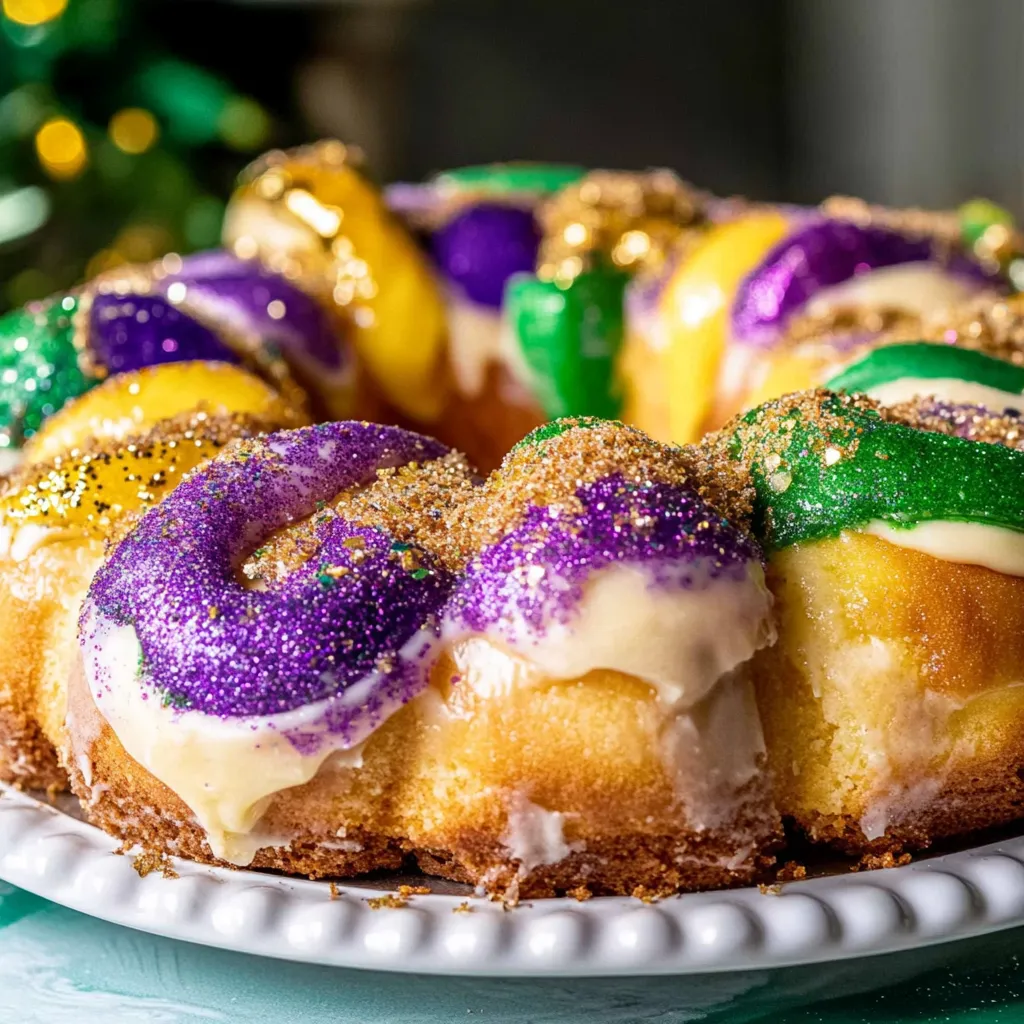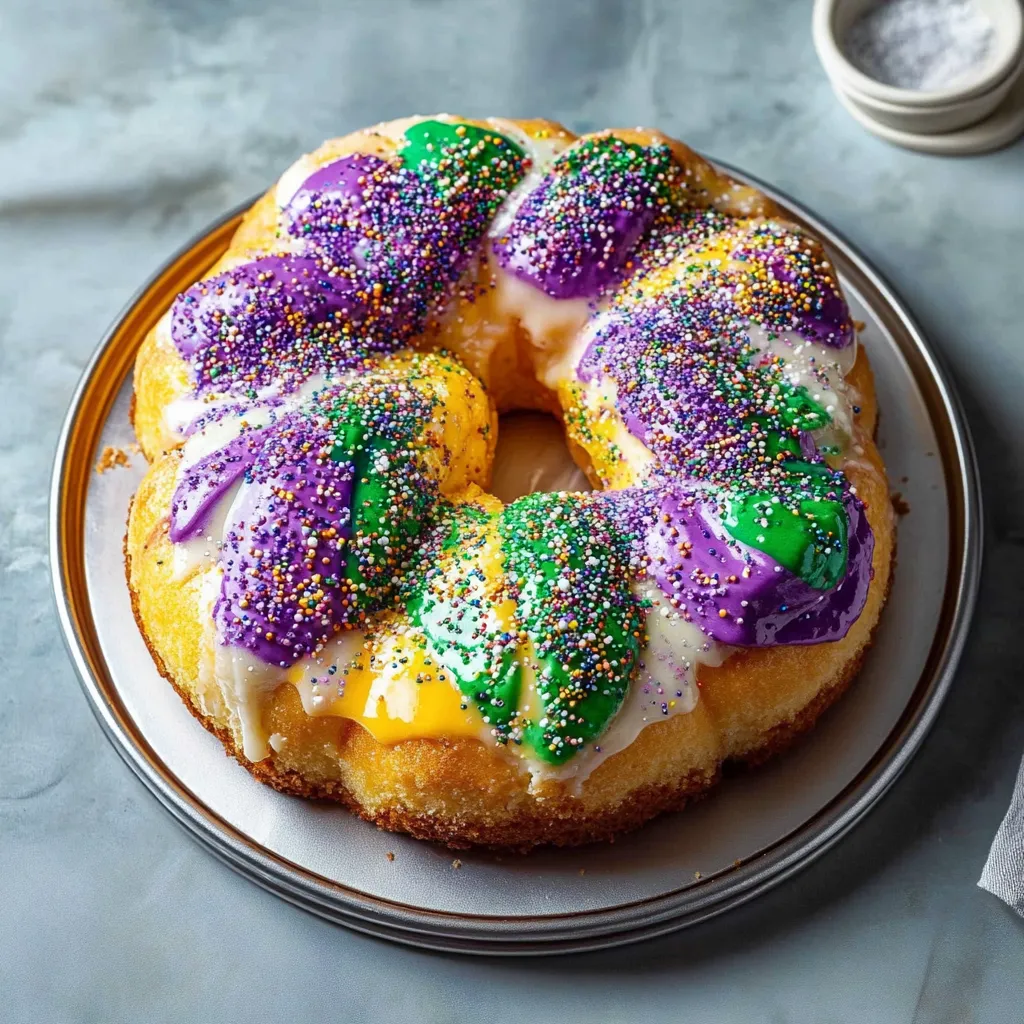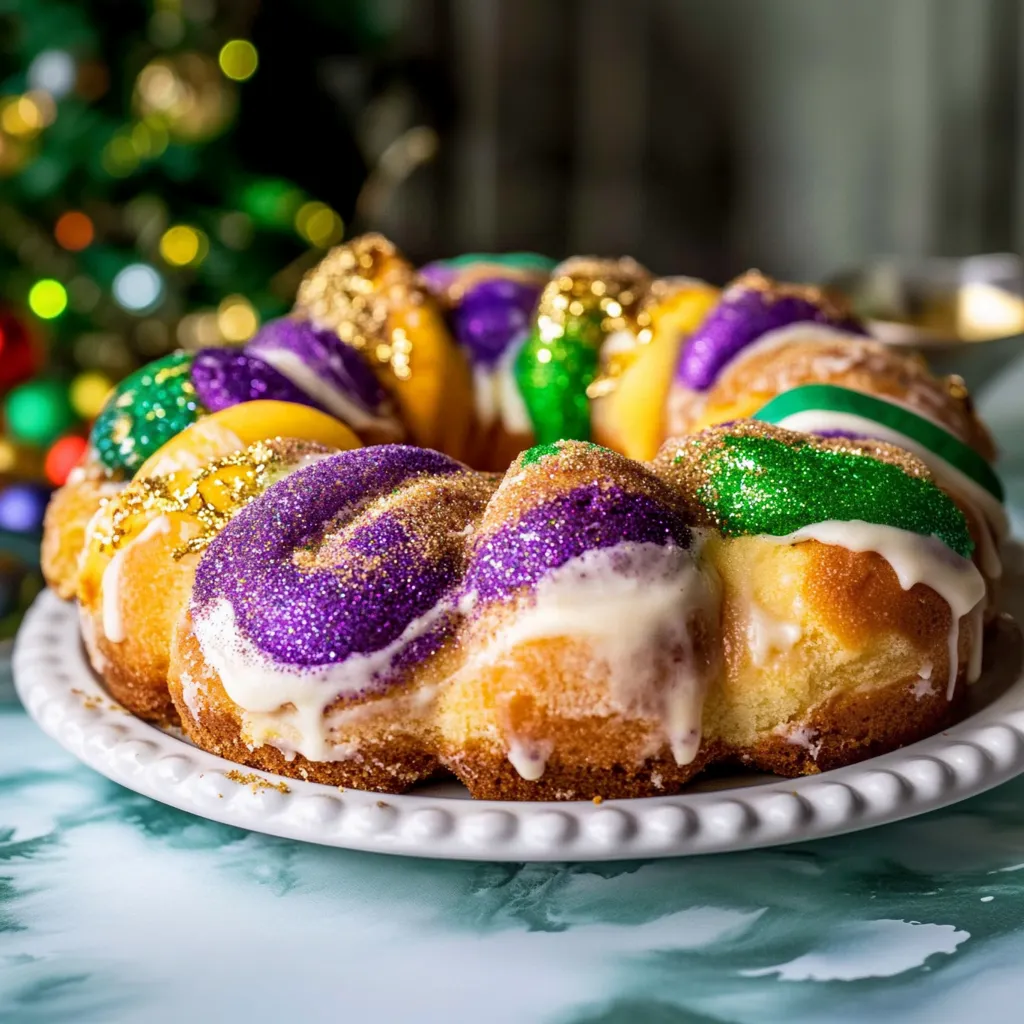 Pin it
Pin it
A celebratory brioche ring decked out with colorful sugars and containing a hidden surprise - the Mardi Gras King Cake turns a luxurious, sweet dough into a tribute to New Orleans customs. This DIY version brings all the excitement and meaning of carnival season while offering a soft, tasty treat that beats anything you'd buy from a store.
I whipped this up for a Mardi Gras get-together last year, and everyone had a blast hunting through their pieces for the hidden baby. What's my trick? Spending enough time letting the brioche dough develop for just the right consistency.
Key Ingredients and Smart Picks
- All-Purpose Flour: Makes the cake wonderfully soft
- Active Dry Yeast: Helps the dough puff up nicely
- Butter: Go for something fancy for better taste
- Eggs: Add richness and hold everything together
- Colored Sugar: Gold, green, and purple for the classic look
- Fillings: Pick between cinnamon or cream cheese
Easy-to-Follow Process
- 1. Getting the Dough Right
- Make sure yeast gets foamy, Add ingredients bit by bit, Work dough until it's smooth and stretchy
- 2. Creating Your Filling
- Fix up filling during dough's first rise, Spread it all over evenly, Press edges firmly to keep it inside
- 3. Forming the Cake
- Flatten dough to same thickness all over, Twist the ropes gently, Shape into a perfect oval
Meaning and Heritage
Knowing what this cake stands for can make you enjoy it even more. The bright colors mean power, faith, and justice, adding extra significance to its party-ready look. Its ring shape reminds us of a royal crown, showing its kingly roots. Finding the hidden baby inside means good luck and wealth, making that moment special for whoever gets it.
 Pin it
Pin it
Prep-Ahead Tricks
Getting stuff ready beforehand can make baking easier and turn out better. You can mix up the dough the evening before and stick it in the fridge after it rises once. When you're ready to bake, just shape your fresh dough and pop it in the oven for the tastiest results.
Managing Heat Just Right
Getting temperatures right matters a lot for great baking. Warm your milk to 110-115°F to wake up the yeast properly, and don't forget to let your eggs sit out until they're not cold anymore. When the bread is done, it should hit 190-195°F inside.
Keeping It Fresh
Taking care of leftovers keeps your bread yummy longer. It'll stay good on your counter for 2-3 days. If you need more time, freeze it without frosting for up to two months. When you want some, warm it up slowly to bring back its softness and flavor.
Our family always throws in some orange zest to the dough - it gives a light citrus kick that works great with both filling types.
After making this cake for many Mardi Gras parties, I've learned that taking your time and focusing on the small stuff really pays off. The way the rich dough builds flavor while rising and how the filling blends with the bread creates something truly special. Whether you're making it for carnival time or just for fun, this King Cake shows how old-school recipes can taste amazing while connecting us to traditions and communities.
Background and Cultural Roots
The King Cake tradition started in Europe, mainly in France and Spain, before it found its way to New Orleans. Way back in medieval times, people celebrated Epiphany with similar cakes, and each place created their own take on it. In New Orleans, the tradition grew alongside Mardi Gras celebrations, becoming a big part of Carnival season from January 6th (Epiphany) through Fat Tuesday. The practice of hiding a small item, originally a dried bean before the plastic baby became popular, stands for baby Jesus and good fortune in the coming year.
Getting Brioche Dough Just Right
The heart of a great King Cake is its rich brioche dough. Unlike regular bread dough, brioche has lots of butter and eggs, which makes it tricky to develop good gluten structure. You've got to watch the temperature - ingredients should be around 68-72°F for best results. Butter that's too cold won't mix in well, while stuff that's too warm makes heavy, greasy dough. How long you knead matters too; the dough should pass the windowpane test, meaning you can stretch it thin enough to see through without it breaking.
Nailing the Different Fillings
The classic cinnamon filling mixes brown sugar, butter, and top-quality Ceylon cinnamon for the most interesting flavor. Your butter should be just soft enough to make a spreadable mix. For cream cheese filling, getting the temperature right is super important - cream cheese at room temp won't leave any lumps when mixed. Using real vanilla beans instead of liquid extract creates subtle flavor throughout. Each filling needs its own spreading method to keep it from leaking while baking.
Shaping It Like a Pro
Getting that oval shape needs careful rolling and twisting. Start with a rectangle exactly 10x16 inches for the right thickness. When cutting lengthwise, a pizza cutter works better than a knife for clean cuts. When you twist the dough, keep even tension - too loose leaves gaps, too tight makes uneven baking. To make the oval, join the ends at a 45-degree angle so they blend together smoothly.
 Pin it
Pin it
Colorful Decoration Strategies
Traditional Mardi Gras colors each have their own meaning: purple stands for justice, green means faith, and gold represents power. When you're adding colored sugars, work in sections while the frosting is still wet. You can make clean lines between colors by using a paper guide. The sugar crystals need to be just the right size - too small and they'll disappear into the frosting, too big and they won't stick properly.
Frequently Asked Questions
- → Why are there two cakes in this recipe?
- The traditional size splits into two for easier baking. Freeze one for later or share with others during Mardi Gras fun!
- → Can I prepare the dough early?
- Absolutely! Refrigerate it overnight to bake fresh the next day, or freeze the finished cake for up to three months.
- → Which filling do you recommend?
- Both are great options—cinnamon is classic, and cream cheese adds a rich twist. Try one of each since the recipe makes two cakes!
- → What if my dough feels sticky?
- It should feel soft but not unmanageable. Add a bit of flour, about a cup max, to make it easier to handle, but keep it soft for the best texture.
- → Where can I get the decorations like sugar or a baby figurine?
- Check out craft stores like Joann's or Michaels, or mix your own colorful sugar with food dye and regular sugar.
